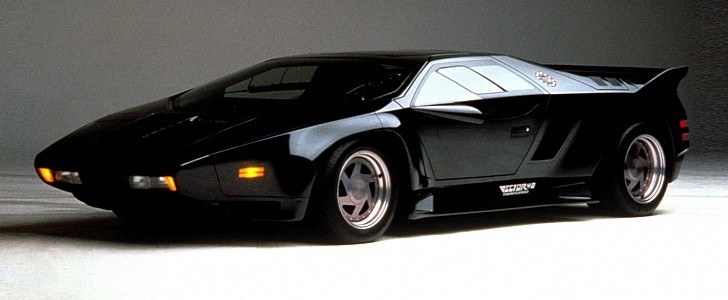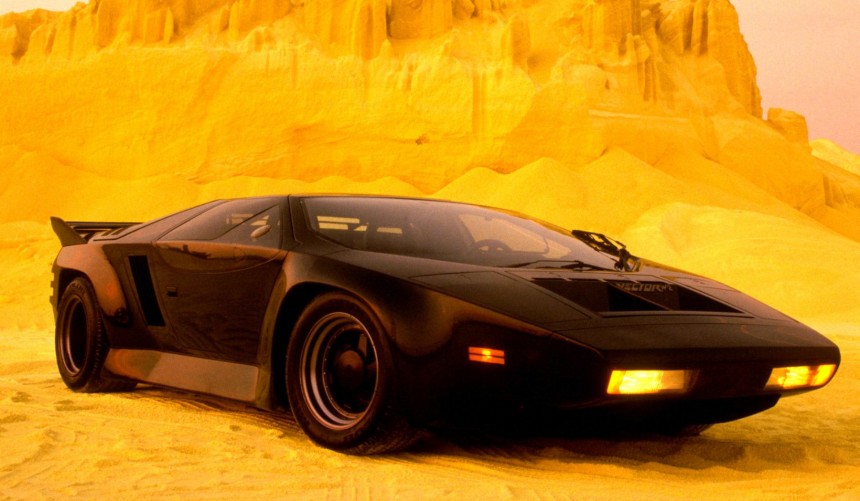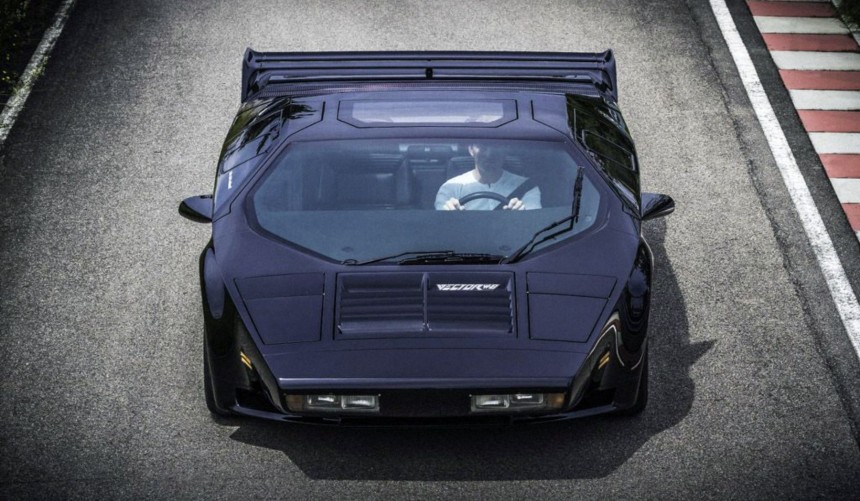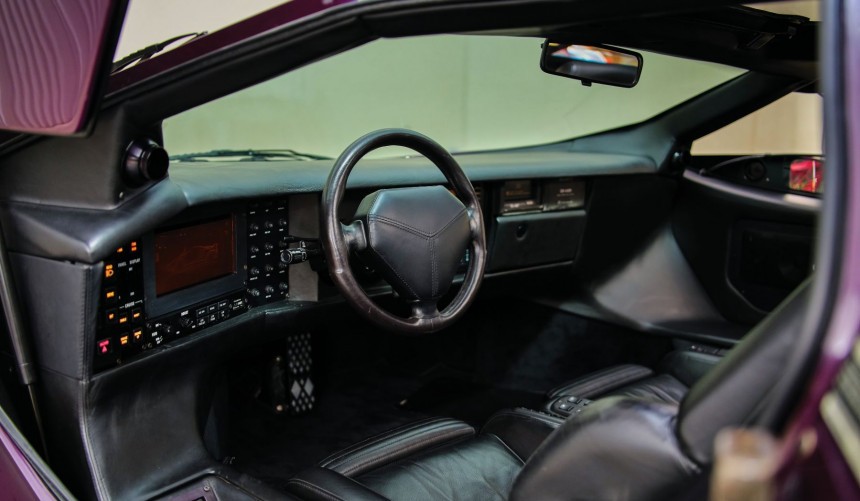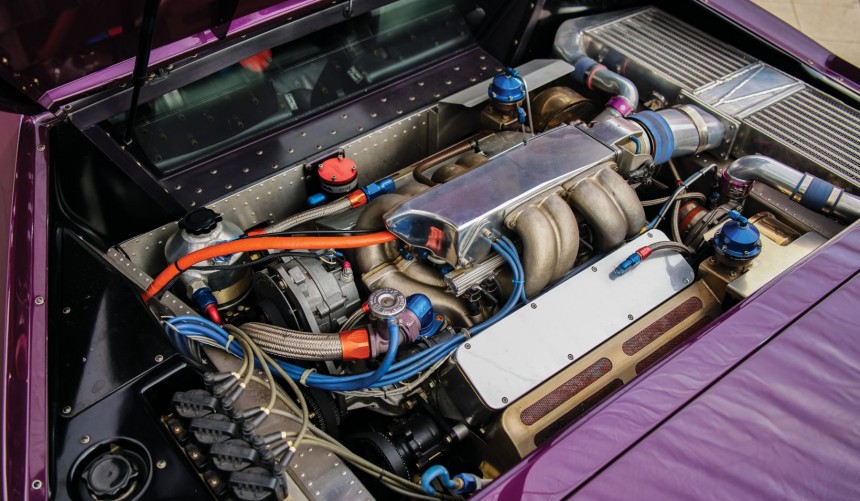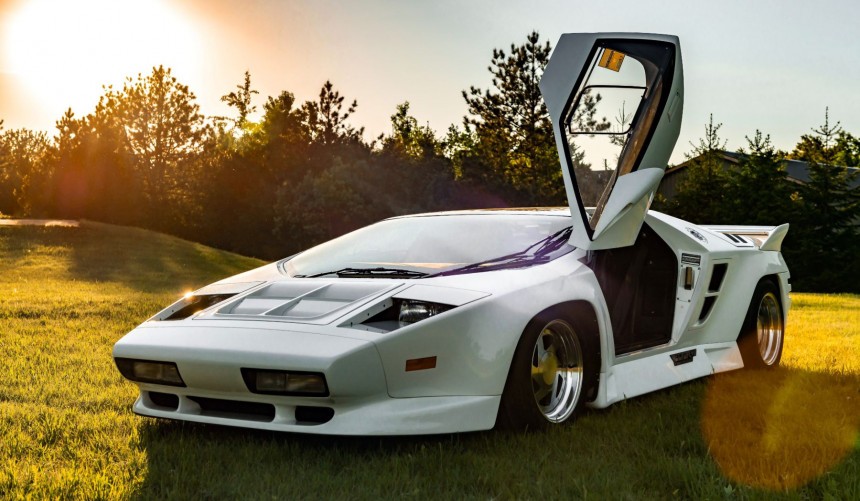The W8 didn’t don Ferrari or Lamborghini badges and it wasn’t the work of an Italian designer. Despite this, it was one of the most incredible supercars ever created, and it was born in California.
Back in the 1960s, the term ‘supercar’ was used on American shores to describe what we now refer to as muscle cars. With the emergence of luxurious European mid-engine, high-performance machines like the Lamborghini Miura and other similar models, it took on a new meaning in the decade that followed.
While supercars were getting better and crazier during the 1970s, back in the U.S., two energy crises ended up crimpling the automotive industry. The golden era of muscle cars was over, and no manufacturer dared to build a vehicle capable of rivaling Lamborghini or Ferrari’s flagship models. Supercar enthusiasts had to settle for the DeTomaso Pantera which was made in Italy, but was powered by a mid-mounted Chevy V8.
Thankfully, some of those people refused to settle and one of the most famous examples is that of the late Gerald Wiegert. After finishing college, he teamed up with Lee Brown, one of Hollywood’s most famous car experts, and founded an independent design studio called Vehicle Design Force in 1971.
Their goal was simple yet completely insane for the era: build America’s first supercar. So, they got to work and a year later, a non-functional prototype dubbed Vector was ready for the spotlight. Inspired by the 1968 Alfa Romeo Carabo concept and the fighter jets of the era, it was so outrageously beautiful that Motor Trend magazine featured it on the cover of their April issue.
The car evolved in the years that followed into the W2; a new prototype revealed in 1978. A year after that, it became fully functional, thanks to a twin-turbocharged 350-ci (5.7-liter) aluminum Chevrolet V8 mounted in the middle of the chassis. It was now ready for production, but Wiegert could not secure enough funds, so for the next nine years, the W2 got stuck into a seemingly endless development process, racking up over 100,000 miles (160,934 km) of testing.
Finally, by the late 1980s, things began to move in the right direction. The company grew and moved to a new facility, which was enough to turn Wiegert’s lifelong dream into reality. With the help of David Kostka, Vector's head of engineering, the W2 was converted into a new, more modern vehicle named W8. Two prototypes were revealed in early 1989 and by the end of the year, after passing DOT (Department of Transportation) crash and emissions tests, a limited production run began.
The car was built around a semi-aluminum monocoque chassis bolted to an aluminum honeycomb floor pan using aircraft-spec rivets. For the suspension system, a double A-arm setup was used up front, while the rear got De Dion tubes held in place by four trailing arms. The cherry on top was a set of perfomance adjustable shocks, with concentric springs developed by Koni.
Built in large part using lightweight carbon fiber and Kevlar, the bodywork retained the futuristic, wedge-shaped design of its predecessors, along with the awesome Lamborghini-inspired scissor doors.
Inside, everything was upholstered in high-quality materials such as leather, suede, or wool. The car came with a premium air conditioning system and a Sony stereo with a ten-disk CD changer built-in the passenger side of the dash. The high-tech features continue with power windows and electrically adjustable full-leather seats that were manufactured by Recaro.
Arguably its ugliest feature, the steering wheel was adorned with a leather stitched center pad that was designed to tear up and make room for the airbag in case of a collision. Yes, the W8 had a frontal airbag and it’s actually the first supercar to offer this safety feature as standard.
While the steering wheel was the ugliest part of the cabin, the dashboard was by far the coolest. It was riddled with buttons and switches similar to those in an aircraft cockpit. This might have been a nightmare in terms of convenience, but it sure looked awesome.
To top off the aircraft look, an LCD screen taken from an actual fighter jet was incorporated on the driver’s left-hand side. It was used to display relevant information like gear, speed, fuel level, or oil pressure as well as other telemetry figures.
Another eccentric feature worth mentioning is the transmission lever. Probably in order to place the driver’s seat as close to the center of the car as possible, Vector chose to fit the lever on the driver’s side door sill. It was easy to reach, but its unusual positioning made it hard to adjust to.
At the core of the W8 stood a high-performance twin-turbo Rodeck aluminum 365 ci (6.0-liter) racing engine based on a Corvette unit. It utilized two intercooled Garrett turbochargers, forged pistons, stainless-steel conrods and valves, roller rocker arms, a forged crank as well as a dry-sump lubrication system with three separate filters and braided stainless-steel hoses.
Output was rated at a whopping 625 hp (466 kW) and 649 lb-ft (880 Nm) of torque, considerably more than what supercars of the era could deliver.
There’s no doubt that the powerplant was absolutely insane, but Vector chose to link it with an antiquated GM Turbo-Hydramatic 425 three-speed automatic. Yes, it was heavily modified to cope with the immense power, but it was still a 1960s design.
In terms of performance, the manufacturer stated that its formidable machine could accelerate from 0 to 60 mph (0–97 kph) in about 3.9 seconds and achieve a top speed of 242 mph (389 kph). This would have made it the fastest production car of the era by a large margin. However, all three cars delivered for testing to Car and Driver broke down, so those figures were not independently confirmed.
Mainly because of this failed test, the Vector W8 got a bad reputation which influenced public perception. With a price of up to $455,000 ($939,854 today), the few who could afford it were hesitant to buy one.
Ultimately, only 22 units were produced between 1989 and 1993, despite Road & Track’s successful test in 1992. While the team didn’t perform a high-speed test, they recorded a 0-60 mph (0-97 kph) time of 4.2 seconds, and the resulting article praised the car’s overall performance.
Today, the W8 is proof that, with enough perseverance, even the most insane dreams can become reality. It remains one of the most outrageous supercars ever built and is highly sought-after by collectors. The value for one in perfect condition exceeds $1.5 million.
Below, you’ll find the most comprehensive video of this amazing vehicle. It was posted on YouTube by the one and only Doug DeMuro and although it’s over 38 minutes long, it’s worth every second.
While supercars were getting better and crazier during the 1970s, back in the U.S., two energy crises ended up crimpling the automotive industry. The golden era of muscle cars was over, and no manufacturer dared to build a vehicle capable of rivaling Lamborghini or Ferrari’s flagship models. Supercar enthusiasts had to settle for the DeTomaso Pantera which was made in Italy, but was powered by a mid-mounted Chevy V8.
Thankfully, some of those people refused to settle and one of the most famous examples is that of the late Gerald Wiegert. After finishing college, he teamed up with Lee Brown, one of Hollywood’s most famous car experts, and founded an independent design studio called Vehicle Design Force in 1971.
How It All Began
The car evolved in the years that followed into the W2; a new prototype revealed in 1978. A year after that, it became fully functional, thanks to a twin-turbocharged 350-ci (5.7-liter) aluminum Chevrolet V8 mounted in the middle of the chassis. It was now ready for production, but Wiegert could not secure enough funds, so for the next nine years, the W2 got stuck into a seemingly endless development process, racking up over 100,000 miles (160,934 km) of testing.
Finally, by the late 1980s, things began to move in the right direction. The company grew and moved to a new facility, which was enough to turn Wiegert’s lifelong dream into reality. With the help of David Kostka, Vector's head of engineering, the W2 was converted into a new, more modern vehicle named W8. Two prototypes were revealed in early 1989 and by the end of the year, after passing DOT (Department of Transportation) crash and emissions tests, a limited production run began.
An Incredible Feat of Engineering
Built in large part using lightweight carbon fiber and Kevlar, the bodywork retained the futuristic, wedge-shaped design of its predecessors, along with the awesome Lamborghini-inspired scissor doors.
Inside, everything was upholstered in high-quality materials such as leather, suede, or wool. The car came with a premium air conditioning system and a Sony stereo with a ten-disk CD changer built-in the passenger side of the dash. The high-tech features continue with power windows and electrically adjustable full-leather seats that were manufactured by Recaro.
While the steering wheel was the ugliest part of the cabin, the dashboard was by far the coolest. It was riddled with buttons and switches similar to those in an aircraft cockpit. This might have been a nightmare in terms of convenience, but it sure looked awesome.
To top off the aircraft look, an LCD screen taken from an actual fighter jet was incorporated on the driver’s left-hand side. It was used to display relevant information like gear, speed, fuel level, or oil pressure as well as other telemetry figures.
Another eccentric feature worth mentioning is the transmission lever. Probably in order to place the driver’s seat as close to the center of the car as possible, Vector chose to fit the lever on the driver’s side door sill. It was easy to reach, but its unusual positioning made it hard to adjust to.
Output was rated at a whopping 625 hp (466 kW) and 649 lb-ft (880 Nm) of torque, considerably more than what supercars of the era could deliver.
There’s no doubt that the powerplant was absolutely insane, but Vector chose to link it with an antiquated GM Turbo-Hydramatic 425 three-speed automatic. Yes, it was heavily modified to cope with the immense power, but it was still a 1960s design.
In terms of performance, the manufacturer stated that its formidable machine could accelerate from 0 to 60 mph (0–97 kph) in about 3.9 seconds and achieve a top speed of 242 mph (389 kph). This would have made it the fastest production car of the era by a large margin. However, all three cars delivered for testing to Car and Driver broke down, so those figures were not independently confirmed.
How It All Ended
Ultimately, only 22 units were produced between 1989 and 1993, despite Road & Track’s successful test in 1992. While the team didn’t perform a high-speed test, they recorded a 0-60 mph (0-97 kph) time of 4.2 seconds, and the resulting article praised the car’s overall performance.
Today, the W8 is proof that, with enough perseverance, even the most insane dreams can become reality. It remains one of the most outrageous supercars ever built and is highly sought-after by collectors. The value for one in perfect condition exceeds $1.5 million.
Below, you’ll find the most comprehensive video of this amazing vehicle. It was posted on YouTube by the one and only Doug DeMuro and although it’s over 38 minutes long, it’s worth every second.
